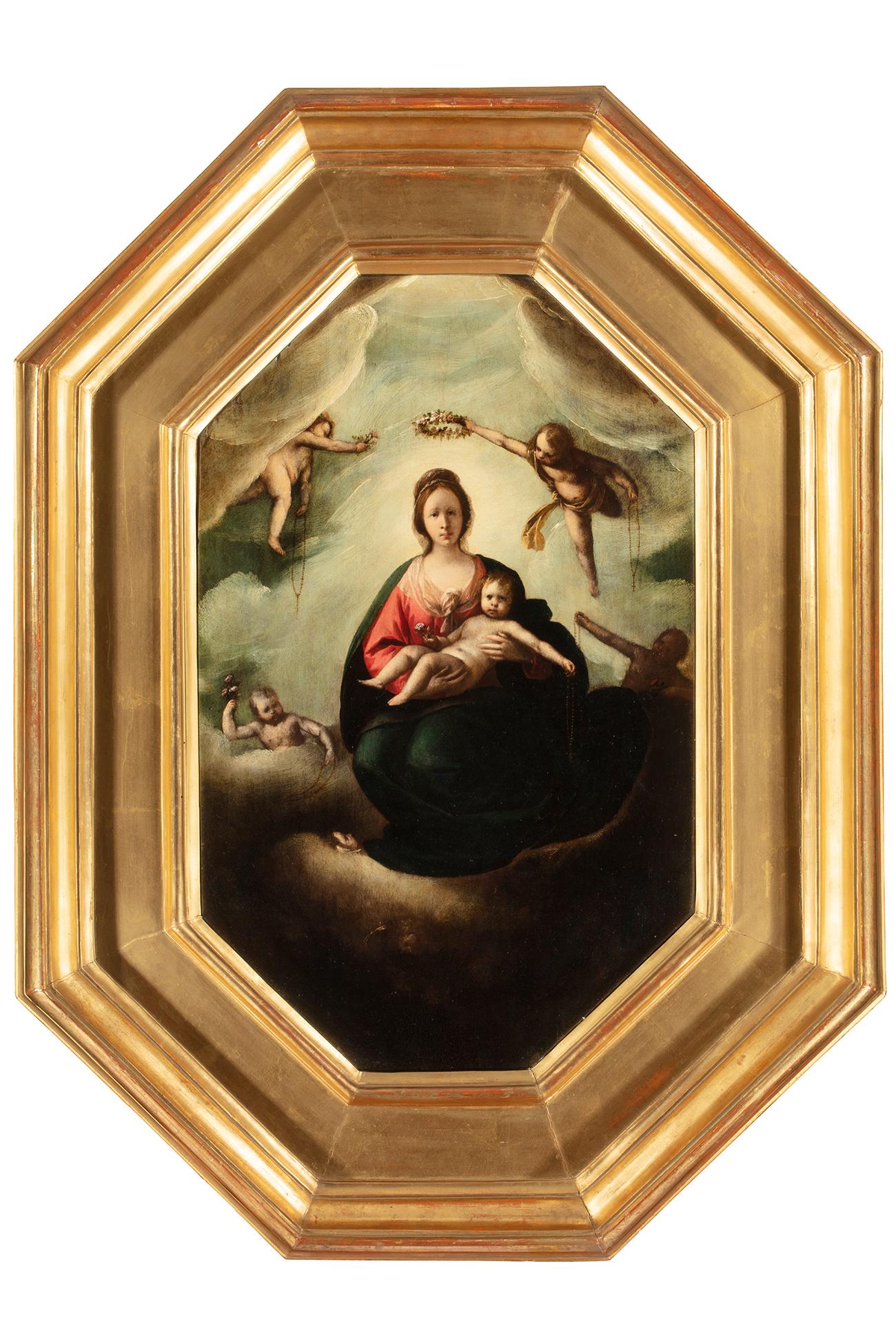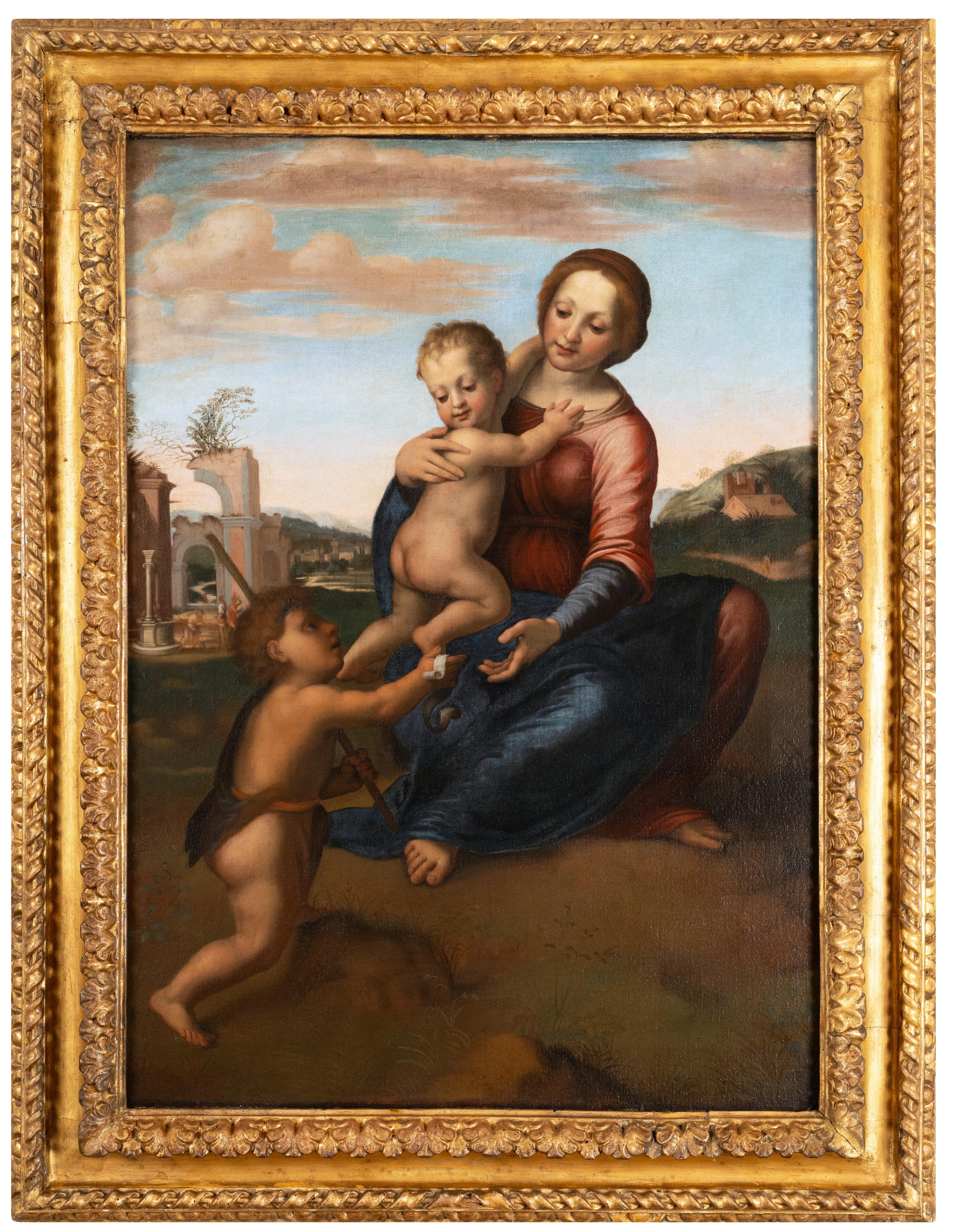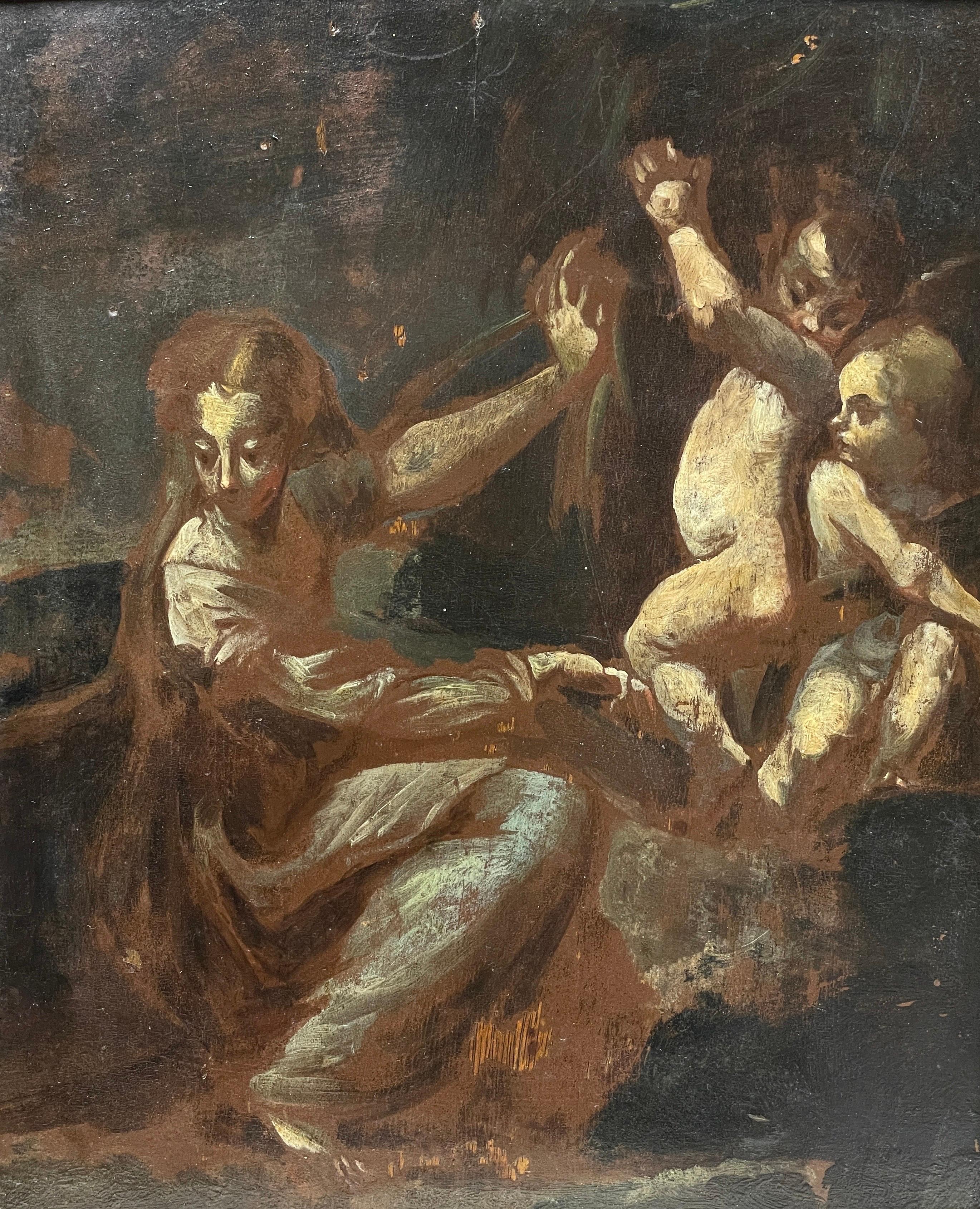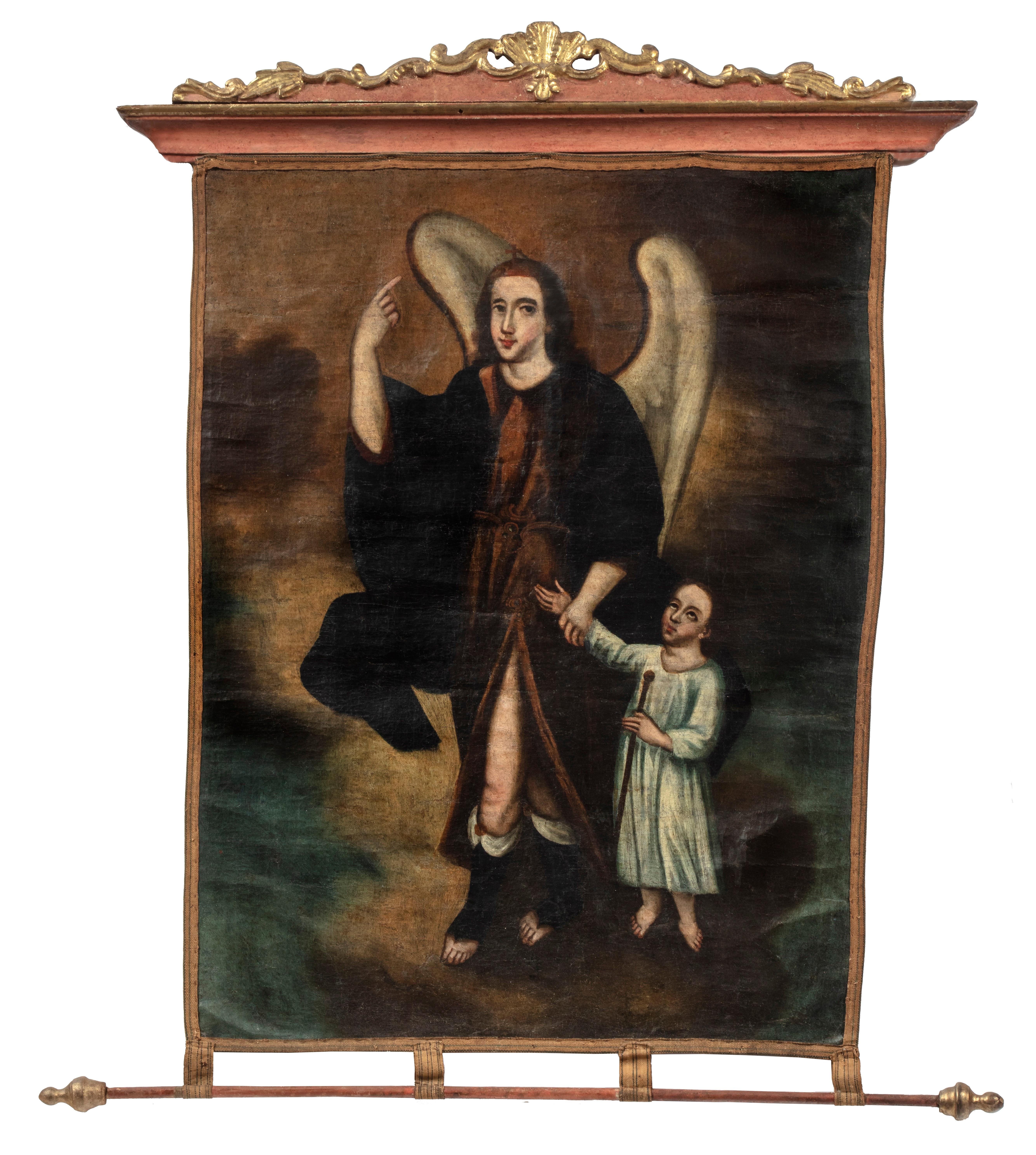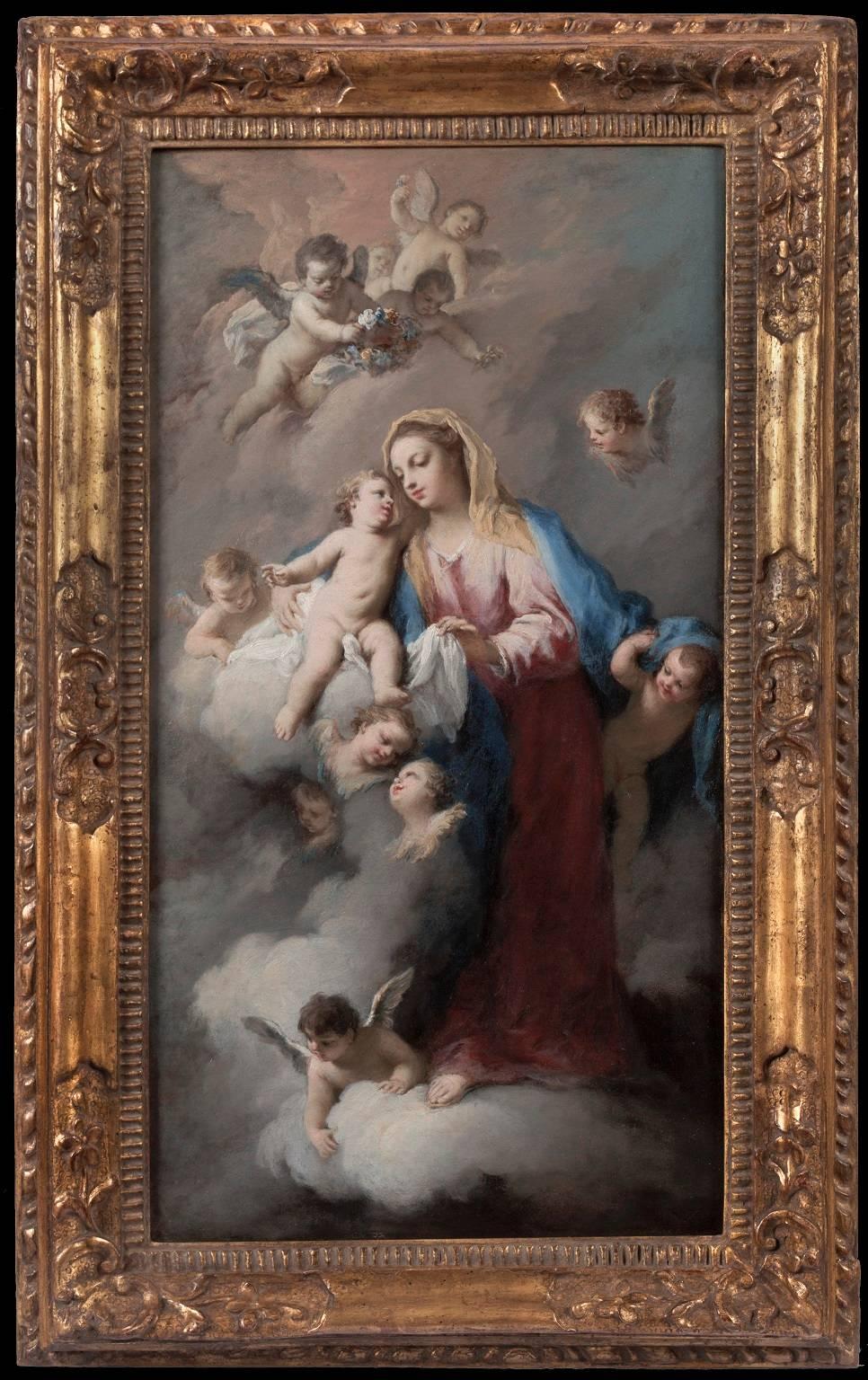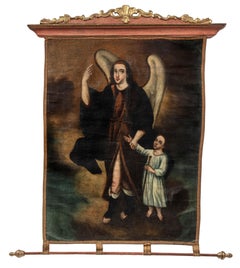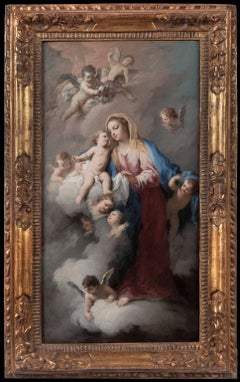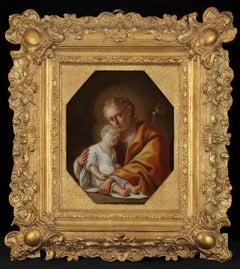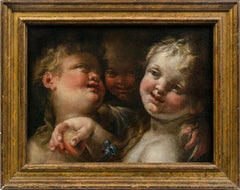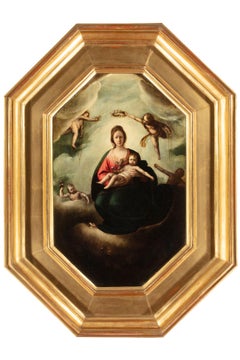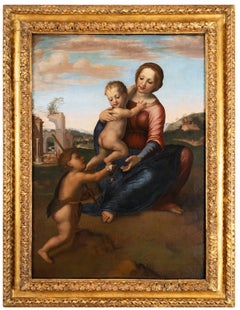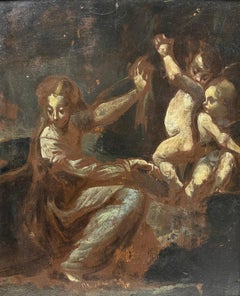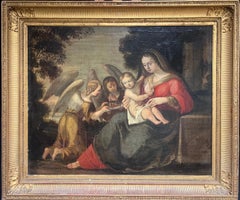Items Similar to A Guardian Angel and a Child
Want more images or videos?
Request additional images or videos from the seller
1 of 5
Baldassarre Franceschini, called Il VolterranoA Guardian Angel and a Child17th Century
17th Century
$34,000
£25,972.65
€29,842.52
CA$48,612.69
A$53,559.86
CHF 27,725.83
MX$644,874.60
NOK 351,076.04
SEK 329,813.74
DKK 222,812.06
About the Item
Provenance:
Cornelius Vanderbilt, New York; by whom gifted in 1880 to:
The Metropolitan Museum of Art, New York (80.3.673); deaccessioned and sold:
Christie’s, New York, 12 June 1981, lot 196
With L’Antiquaire, Inc., New York
June Hirsch Jones, New York and Florida; her estate until 2022.
Literature:
George H. Story, Catalogue of Paintings in the Metropolitan Museum of Art, New York, 1901, pp. 30-31, 223, cat. no. 85, as Volterrano, Head of An Angel (republished in later editions: 1902, pp. 30-31, 285; 1904, pp. 30-31, 294).
Catalogue of Paintings in the Metropolitan Museum of Art, New York, 1905, p. 53, cat. no. 25, as Volterrano, Head of An Angel (republished in 1908 and 1911).
Bryson Burroughs, The Metropolitan Museum of Art: Catalogue of Paintings, New York, 1914, p. 277, cat. no. V822, as Volterrano, Head of An Angel (republished in 1916, p. 311, cat. no. V822-1; 1917, p. 318; 1919, p. 331-332; 1920, p. 316, cat. no. V882-1; 1922, p. 326; 1924, p. 352; 1926, p. 373).
Ulrich Thieme and Felix Becker, “Baldassare Franchescini,” in Allgemeines Lexikon Der Bildenden Künstler Von Der Antike Bis Zur Gegenwart, vol. 12, Leipzig, 1916, p. 296, “im Metropol. Mus. Zu New York ein al fresco gemalter großer Engelkopf (Kat. 1914 n. 882).”
Harry B. Wehle, The Metropolitan Museum of Art: Catalogue of Paintings, vol. 1, “A Catalogue Italian, Spanish, and Byzantine Paintings,” New York, 1940, pp. 264-265, as Volterrano, An Angel and a Child.
Josephine Allen and Elizabeth Gardner, A Concise Catalogue of the European Paintings in the Metropolitan Museum of Art, New York, 1954, p. 100, as Volterrano, An Angel and a Child.
Burton B. Fredericksen and Federico Zeri, Census of Pre-Nineteenth-Century Italian Paintings in North American Public Collections, Cambridge, 1972, pp. 212, 605 as attributed to Volterrano.
Giuseppe Cantelli, Repertorio della Pittura Fiorentina del Seicento, Fiesole, 1983, p. 86, as by Volterrano, An Angel and Child, incorrectly as a fragment.
Sandro Bellesi, Catalogo dei Pittori Fiorentini del ‘600 e ‘700, Florence, 2009, vol. 1, p. 150, as by Volterrano, A Guardian Angel, incorrectly as a fragment.
Fabbri Capecchi and Maria Cecilia, “Franceschini, Baldassare,” Allgemeines Künstlerlexikon Online, 2021.
The present work is an integral, independent work, carried out in true fresco technique on a terracotta roof tile (embrico or tegola). This unusual and rare format, evidently devised in response to collector demand for portable paintings in fresco, seems to have been Florentine in origin and was particularly in vogue there in the 17th century, Volterrano and Giovanni da San Giovanni being the main practitioners of this unique genre of true fresco painting.
Among the few surviving examples of this type are works by Fra Bartolomeo (Mary Magdalen, Silencing Monk in San Marco), Andrea del Sarto (Self-portrait, Florence, San Marco and Uffizi), as well as a powerful and elegant testa divina (“ideal head”) by an as yet unknown artist who was strongly indebted to Michelangelo. As the terracotta tile support was a standard size, all known examples are of virtually identical dimensions, roughly 20 ½ x 14 ½ inches. A consequence of the technical properties of painting on wet plaster is that this work was necessarily painted in a single day.
- Creator:Baldassarre Franceschini, called Il Volterrano (1611 - 1690, Italian)
- Creation Year:17th Century
- Dimensions:Height: 19.75 in (50.17 cm)Width: 14.38 in (36.53 cm)Depth: 2 in (5.08 cm)
- Medium:
- Movement & Style:
- Period:
- Condition:
- Gallery Location:New York, NY
- Reference Number:1stDibs: LU10211799982
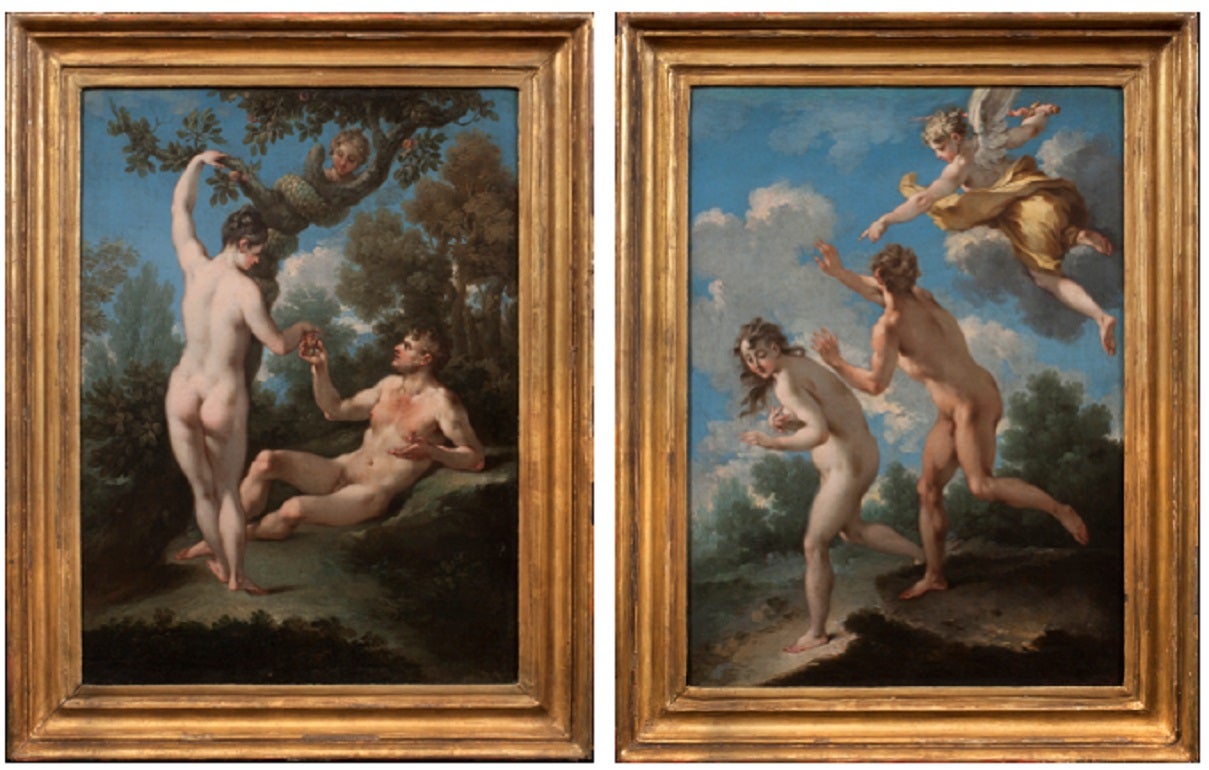
About the Seller
5.0
Recognized Seller
These prestigious sellers are industry leaders and represent the highest echelon for item quality and design.
Established in 1997
1stDibs seller since 2012
24 sales on 1stDibs
Typical response time: 16 hours
- ShippingRetrieving quote...Shipping from: New York, NY
- Return Policy
Authenticity Guarantee
In the unlikely event there’s an issue with an item’s authenticity, contact us within 1 year for a full refund. DetailsMoney-Back Guarantee
If your item is not as described, is damaged in transit, or does not arrive, contact us within 7 days for a full refund. Details24-Hour Cancellation
You have a 24-hour grace period in which to reconsider your purchase, with no questions asked.Vetted Professional Sellers
Our world-class sellers must adhere to strict standards for service and quality, maintaining the integrity of our listings.Price-Match Guarantee
If you find that a seller listed the same item for a lower price elsewhere, we’ll match it.Trusted Global Delivery
Our best-in-class carrier network provides specialized shipping options worldwide, including custom delivery.More From This Seller
View AllA Guardian Angel Leading a Child
Located in New York, NY
Provenance: Private Collection, Argentina; there acquired by
Mr. and Mrs. Ernest T. Harper, New York, by 1960; by descent to:
Mr. and Mrs. Alan Harper, New York, until 2024.
This s...
Category
18th Century Old Masters Figurative Paintings
Materials
Canvas, Oil
Madonna and Child with Angels in the Clouds
Located in New York, NY
Provenance: Charles H. and Virginia Baldwin, Claremont, Colorado Springs, Colorado ca. 1907-1934; thence by descent until sold in 1949 to:
Charles Blevins Davis, Claremont (renamed Trianon), Colorado Springs 1949 -until gifted in 1952 to:
The Poor Sisters of Saint Francis, Trianon, Colorado Springs, 1952 until acquired, 1960, by:
John W. Metzger, Trianon, renamed as the Trianon School of Fine Arts, Colorado Springs, 1960-1967; when transferred to:
The Metzger Family Foundation, Trianon Art Museum, Denver, 1967 - 2004; thence by descent in the Metzger Family until 2015
Exhibited: Trianon Art Museum, Denver (until 2004)
The present work is a spectacular jewel-like canvas by Amigoni, rich in delicate pastel colors, most likely a modello for an altarpiece either lost or never painted. In it the Madonna stands firmly upon a cloud in the heavens, her Child resting on a delicate veil further supported by a cloud, as he gently wraps his arm around his mother’s neck. From above angels prepare to lower flowers and a wreath, while other angels and seraphim surrounding the two joyfully cavort.
Dr. Annalisa Scarpa, author of the forthcoming monograph on Jacopo Amigoni...
Category
18th Century and Earlier Figurative Paintings
Materials
Canvas, Oil
Joseph Holding the Christ Child
By Pietro Bardellino
Located in New York, NY
Provenance: Private Collection, Argentina.
A work of great delicacy and intimacy, this small painting on copper by Pietro Bardellino treats a subject which grew in popularity during the Baroque period: Saint Joseph and the Christ child...
Category
18th Century Baroque Paintings
Materials
Copper
Three Angels
By Domenico Piola the Elder
Located in New York, NY
Provenance:
Robert L. and Bertina Suida Manning, New York, until 1996
Private Collection, USA
One of the leading artists in Genoa during the second half of the seventeenth century, Domenico Piola came from a successful family of artists, renowned for their many illusionistic ceiling programs throughout Genoese churches and palaces. A prolific draughtsman and painter, Domenico oversaw an extremely productive studio. In addition to his collaborations with numerous other artists, Domenico also provided many designs for book illustrations and prints that circulated throughout Europe, earning him international exposure and high acclaim in his own day.
As Dr. Anna Orlando has indicated (written communication), the present work is an early work by Piola, datable from the late 1640s. At this time the young artist came strongly under the influence of Castiglione and Valerio Castello, while admiring the works of Giulio Cesare Procaccini. Piola’s works from this period are exuberant and fluid, and the artist’s love of portraying children is evident from the angels and putti that populate both his altarpieces and more intimate paintings.
The present work depicts three angels...
Category
17th Century Baroque Figurative Paintings
Materials
Canvas, Oil
The Archangel Gabriel
By Cristobal de Villalpando
Located in New York, NY
Provenance: Private Collection, Cranston, Rhode Island (by the 1950s?); by family descent until sold at:
Bill Spicer Auction, North Kingstown, Rhode Island, 26 January 2011; where a...
Category
Late 17th Century Old Masters Figurative Paintings
Materials
Canvas, Oil
Baptism of Christ
Located in New York, NY
Provenance:
Achillito Chiesa, Milan
Luigi Albrighi, Florence, by 1 July 1955
with Marcello and Carlo Sestieri, Rome, 1969
Private Collection, Connecticut
Exhibited:
Mount Holyoke College Art Museum, South Hadley, Massachusetts (on loan, 2012)
Literature:
Carlo Volpe, “Alcune restituzioni al Maestro dei Santi Quirico e Giulitta,” in Quaderni di Emblema 2: Miscellanea di Bonsanti, Fahy, Francisci, Gardner, Mortari, Sestieri, Volpe, Zeri, Bergamo, 1973, pp. 19-20, fig. 18, as by the Master of Saints Quiricus and Julitta (now identified as Borghese di Piero).
This fine predella panel depicting the Baptism...
Category
15th Century and Earlier Old Masters Figurative Paintings
Materials
Tempera, Wood Panel
You May Also Like
17th Century by Giovanni Stefano Danedi Madonna and Child Crowned by Angels
Located in Milano, Lombardia
Giovanni Stefano Danedi, called Montalto (Treviglio, Italy, 1612 - Milan, Italy, 1690)
Title: Madonna and Child crowned by angels
Medium: Oil on panel
Dimensions: without frame 58 x ...
Category
17th Century Old Masters Portrait Paintings
Materials
Panel, Oil
17th century Italian school, The Virgin and Child with Saint John the Baptist
Located in PARIS, FR
17th century Italian School
The Virgin and Child with Saint John the Baptist
Oil on canvas
Dimensions: h. 106 cm, l. 77 cm
Important 17th century Italian carved giltwood frame
Fram...
Category
17th Century Old Masters Figurative Paintings
Materials
Canvas, Oil
Angelic Cherubs with Classical Figure in Wilderness Finely Painted Preparatory
Located in Cirencester, Gloucestershire
Figure with Cherubim in Wilderness
Italian School, 17th century
oil painting on wood panel
framed 13 x 11 inches
condition: overall for its age very good, though the work is most likely a preparatory...
Category
17th Century Old Masters Figurative Paintings
Materials
Oil, Wood Panel
17th Century Painting Baroque Madonna & Child Attendant Angels Offering Gifts
Located in Cirencester, Gloucestershire
The Angelic Visitation
Italian School, 17th Century
oil on canvas, framed
Framed: 30 x 36 inches
Canvas: 24 x 29 inches
Provenance: private collection, Europe
Condition: the antique...
Category
17th Century Baroque Landscape Paintings
Materials
Oil
Fine 17th Century Italian Old Master Oil Painting Madonna with Christ Child
Located in Cirencester, Gloucestershire
The Madonna & Christ Child
Italian, 17th century
oil on wood panel, unframed
board: 9.5 x 7.5 inches
provenance: private collection, Paris
condition: very good and sound condition fo...
Category
17th Century Old Masters Portrait Paintings
Materials
Oil
18th Century Italian Oil Madonna & Child with St. John the Baptist after Raphael
Located in Cirencester, Gloucestershire
Madonna and Child with St. John the Baptist
Italian artist, 18th century, after the earlier painting by Raphael
oil on wood panel, framed in an Empire, gilt moulded frame
Framed: 23 ...
Category
18th Century Renaissance Figurative Paintings
Materials
Oil
More Ways To Browse
Antique Angel Paintings
Angel 17th Century
Antique Roof Tile
Antique Terracotta Tile
Painting On Plaster
Terracotta Child
17th Century Terracotta
Terracotta Angel
Antique Guardian Angel
Antique Terracotta Roof Tiles
Portrait Canvas Oil Antique Man
18th Century Oil Paintings For Sale
Dutch Oil Portrait
Sir Joshua Reynolds
Robert Young
Andy Warhol Canvas
Officer Portrait
Philadelphia Portrait
